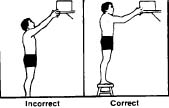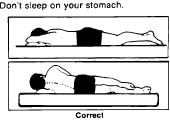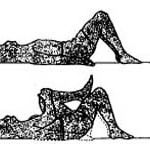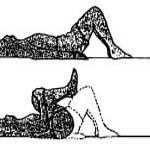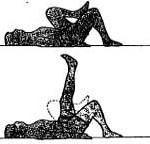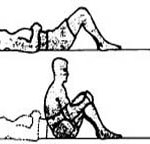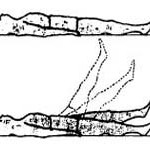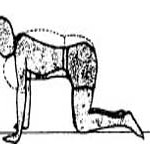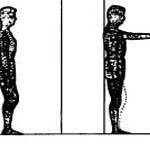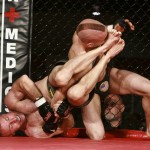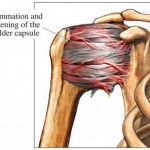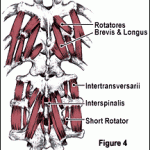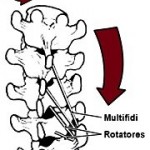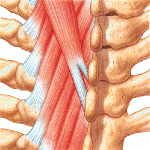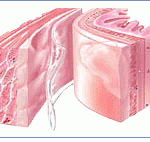Standing and Sitting:
 While standing or sitting keep neck drawn back and chin tucked in, not up.
While standing or sitting keep neck drawn back and chin tucked in, not up.
A proper chair will support your arms and shoulders and help prevent strains of the neck due to forward thrust.
Reaching:
Don’t reach for a shelf higher than your head. Stand on a stool. Don’t reach or look up for any length of time.
Driving:
 Don’t drive with the seat too far back or too low. If necessary, sit on a pillow or use a seat support such as Sacro-Ease to avoid stretching up and forward to see over the steering wheel.
Don’t drive with the seat too far back or too low. If necessary, sit on a pillow or use a seat support such as Sacro-Ease to avoid stretching up and forward to see over the steering wheel.
Resting and Sleeping  RDon’t lie on the sofa to watch TV: sit up or forward on high pillows while reading or watching TV.
RDon’t lie on the sofa to watch TV: sit up or forward on high pillows while reading or watching TV.
Don’t sleep on your stomach. Lie on your side and adjust your pillow to maintain your head and neck in a neutral position. Keep your arms down.
If you sleep on your back, put a pillow under your neck, not your head. Use a bed board or a firm orthopedic mattress. A proper pillow is 3-4 inches thick, 6-7 inches wide, 16 inches long. If you have a neck problem, try an inexpensive contoured pillow, such as Jackson Cervipillo. Don’t sleep in a chair.

